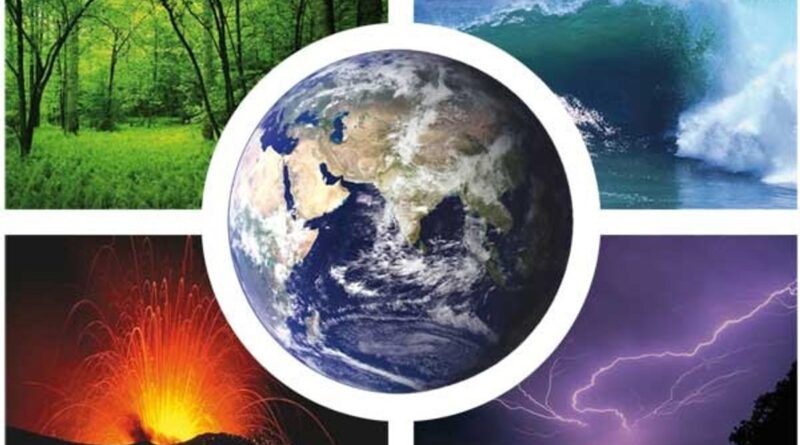What Are the Essential Ecosystems That Support Life on Earth?
Ecosystems are the intricate webs of life that exist within the environment, where living organisms interact with each other and their physical surroundings. They are crucial for maintaining balance in nature and sustaining life on Earth. From the air we breathe to the food we consume, ecosystems play a central role in ensuring the survival of all living organisms, including humans. Without healthy ecosystems, life as we know it would not be possible.
In this article, we will explore the essential ecosystems that support life on Earth. We will discuss their functions, the importance of each ecosystem, and the threats they face due to human activities. Understanding these ecosystems and their vital roles is crucial for preserving biodiversity and ensuring the long-term health of the planet.
1. Forests: The Lungs of the Earth
Forests are one of the most critical ecosystems on Earth, covering approximately 31% of the planet’s land area. They are home to more than 80% of terrestrial species of animals, plants, and insects. Forests provide essential ecological services, including carbon storage, oxygen production, and water regulation.
Key Functions of Forest Ecosystems:
- Carbon Sequestration: Trees absorb carbon dioxide during photosynthesis and store it in their biomass, which helps regulate the Earth’s climate. Forests are one of the planet’s most significant carbon sinks.
- Biodiversity Hotspots: Forests provide habitat to a wide variety of species, including many that are endangered. Tropical rainforests, in particular, are among the most biodiverse ecosystems on the planet.
- Water Cycle Regulation: Forests play a crucial role in the water cycle by absorbing rainwater, filtering it, and releasing it into the atmosphere, ensuring clean water supplies for humans and animals.
Threats to Forest Ecosystems:
- Deforestation: Large-scale logging, agriculture, and urbanization lead to deforestation, which disrupts habitats, reduces biodiversity, and releases stored carbon back into the atmosphere, exacerbating climate change.
- Climate Change: Changes in temperature and precipitation patterns can affect forest health, leading to forest fires, pests, and diseases.
2. Oceans: The Blue Heart of Earth
Oceans cover about 71% of Earth’s surface and are vital for regulating the climate, producing oxygen, and supporting diverse marine life. Oceans also provide food, medicine, and resources that sustain human populations.
Key Functions of Ocean Ecosystems:
- Climate Regulation: Oceans help regulate the Earth’s climate by absorbing and storing heat from the sun. They act as a buffer, moderating global temperatures and weather patterns.
- Oxygen Production: Phytoplankton in the ocean’s surface waters produce a significant portion of the Earth’s oxygen through photosynthesis. It is estimated that the ocean produces at least 50% of the world’s oxygen.
- Food Source: Oceans provide food and livelihoods for millions of people around the world through fishing and aquaculture, which are essential for global food security.
Threats to Ocean Ecosystems:
- Overfishing: Unsustainable fishing practices deplete marine resources, disrupt food webs, and threaten biodiversity.
- Pollution: Plastic waste, oil spills, and chemical pollutants harm marine life and ecosystems. Ocean acidification, driven by increased carbon dioxide in the atmosphere, is also a growing concern, affecting coral reefs and shell-forming marine organisms.
- Climate Change: Rising ocean temperatures, sea level rise, and ocean acidification threaten marine biodiversity and ecosystems.
3. Wetlands: The Earth’s Natural Filters
Wetlands are areas where water saturates the land, either permanently or seasonally. These ecosystems, which include swamps, marshes, and bogs, play an essential role in water purification, flood regulation, and carbon storage.
Key Functions of Wetland Ecosystems:
- Water Filtration: Wetlands act as natural filters, removing pollutants and excess nutrients from water before it reaches rivers, lakes, and oceans. This helps maintain water quality for both humans and wildlife.
- Flood Control: Wetlands absorb excess water from rainfall and snowmelt, reducing the risk of flooding in surrounding areas.
- Carbon Sequestration: Wetlands store large amounts of carbon in their soil, making them vital for mitigating climate change.
Threats to Wetland Ecosystems:
- Drainage for Agriculture and Development: Wetlands are often drained to make way for agriculture, urban development, or infrastructure, resulting in habitat loss and reduced water quality.
- Pollution: Runoff from agricultural chemicals and sewage can degrade wetland ecosystems and reduce their ability to filter water effectively.
4. Grasslands: The World’s Carbon Sinks
Grasslands are vast ecosystems dominated by grasses, with few trees, and they are essential for food production, carbon storage, and supporting grazing animals. Grasslands are found in regions with seasonal rainfall and are often home to large herbivores, such as bison, zebras, and antelope.
Key Functions of Grassland Ecosystems:
- Carbon Storage: Grasslands are effective carbon sinks, absorbing carbon dioxide from the atmosphere and storing it in the soil. They play a critical role in mitigating climate change.
- Soil Fertility: Grasslands contribute to soil fertility through the decomposition of plant matter. These fertile soils support agriculture and are essential for global food production.
- Biodiversity: Grasslands support a variety of species, including many migratory birds, small mammals, and insects, which form part of the larger ecosystem.
Threats to Grassland Ecosystems:
- Overgrazing: Overgrazing by livestock can degrade grasslands, leading to soil erosion, loss of plant species, and reduced biodiversity.
- Agricultural Expansion: Large-scale agriculture and monoculture farming often replace grasslands, threatening the ecosystem’s integrity.
5. Freshwater Ecosystems: Life-Sustaining Waters
Freshwater ecosystems include rivers, lakes, streams, and wetlands, and they provide crucial resources for both wildlife and humans. Freshwater ecosystems are essential for drinking water, irrigation, and habitat for a wide variety of species.
Key Functions of Freshwater Ecosystems:
- Water Supply: Freshwater ecosystems provide water for drinking, agriculture, and industrial use, making them essential for human survival.
- Biodiversity: Freshwater ecosystems are home to a wide range of species, including fish, amphibians, insects, and plants that rely on these habitats for survival.
- Nutrient Cycling: Freshwater systems help cycle nutrients like nitrogen and phosphorus, supporting the health of aquatic ecosystems and the organisms that rely on them.
Threats to Freshwater Ecosystems:
- Pollution: Agricultural runoff, sewage, and industrial waste can contaminate freshwater ecosystems, making water unsafe for consumption and harming aquatic life.
- Dams and Water Diversion: The construction of dams and the diversion of water for agriculture and development can disrupt freshwater habitats and the species that depend on them.
6. Coral Reefs: The Rainforests of the Sea
Coral reefs are some of the most diverse ecosystems on the planet, often referred to as the “rainforests of the sea.” They provide habitat and food for a wide range of marine species and are essential for maintaining marine biodiversity.
Key Functions of Coral Reef Ecosystems:
- Biodiversity Hotspots: Coral reefs are home to an incredible variety of marine species, including fish, crustaceans, mollusks, and sea turtles. They support 25% of all marine species despite covering less than 1% of the ocean floor.
- Coastal Protection: Coral reefs act as natural barriers against coastal erosion by absorbing wave energy, protecting shorelines and coastal communities from storms and flooding.
- Tourism and Livelihood: Coral reefs support local economies through tourism, fishing, and sustainable harvesting, contributing significantly to the livelihoods of millions of people.
Threats to Coral Reef Ecosystems:
- Climate Change: Rising ocean temperatures cause coral bleaching, which weakens corals and can lead to their death. Ocean acidification also harms coral growth.
- Pollution: Plastic waste, oil spills, and chemical pollutants from agricultural runoff damage coral reefs and the species that rely on them.
- Overfishing and Destructive Fishing Practices: Overfishing and the use of harmful fishing techniques, such as blast fishing, can degrade coral reef ecosystems.
Conclusion
Ecosystems are the foundation of life on Earth, providing essential services that sustain biodiversity and ensure the survival of all living organisms. Forests, oceans, wetlands, grasslands, freshwater ecosystems, and coral reefs are among the most vital ecosystems, each playing a unique and irreplaceable role in maintaining ecological balance.
However, these ecosystems are under threat from human activities, including deforestation, pollution, overexploitation, and climate change. Protecting these ecosystems requires a collective effort from governments, businesses, and individuals to adopt sustainable practices, reduce pollution, and combat climate change. By preserving these ecosystems, we ensure the survival of not only wildlife but also future generations of humans, who depend on the natural world for food, water, and a livable planet.

